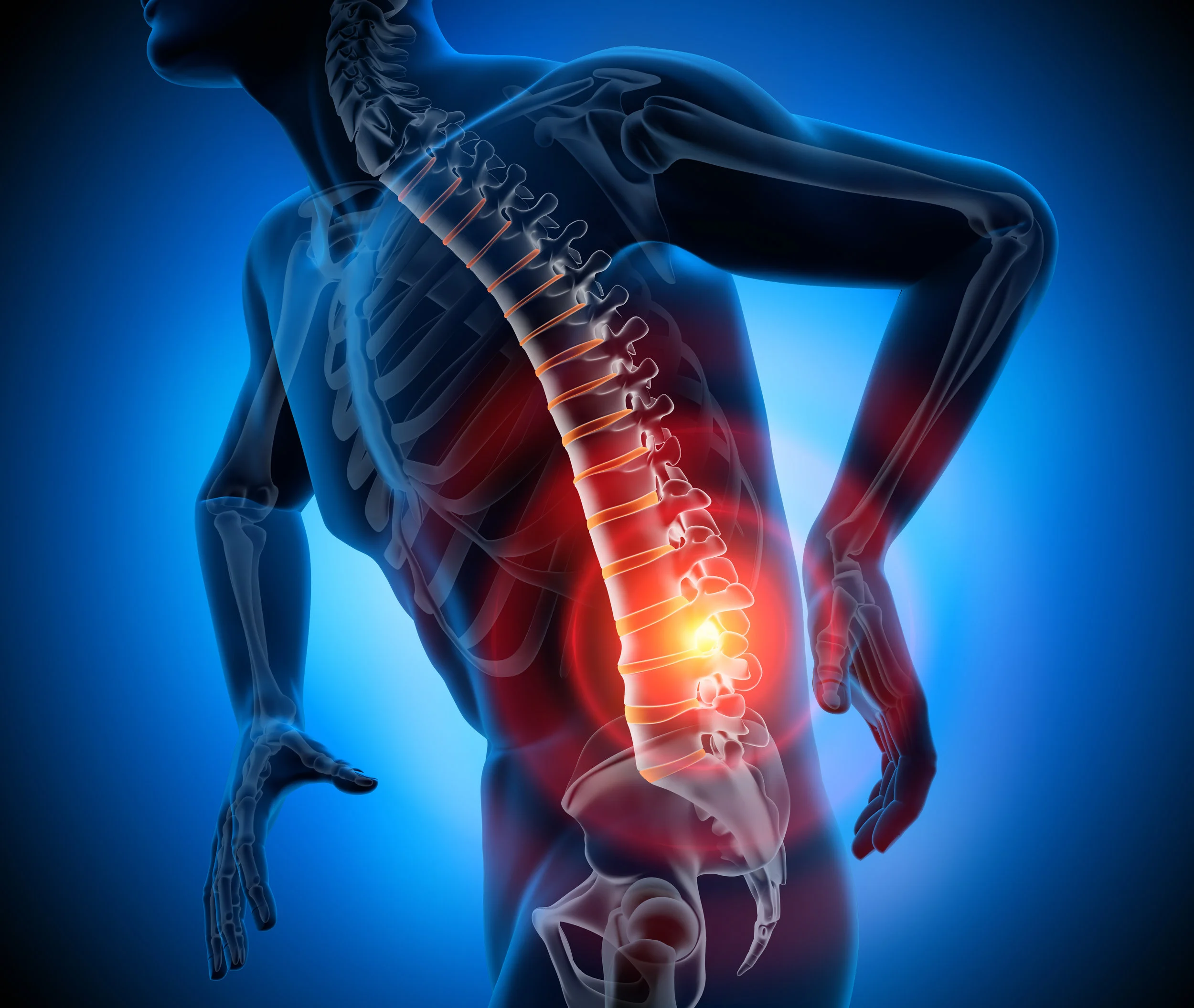Spinal stenosis occurs when one or more areas of the spine narrow and put pressure on the spinal cord or spinal nerves. This compression can cause pain, numbness, or weakness in the extremities. Spinal stenosis can be caused by arthritis, or the degeneration of joints…
Read MoreThoracic stenosis is the narrowing of the spine in the upper back. Pain can occur anywhere from the neck to the waist and can radiate to other areas, such as the ribcage or other organs, as well. Thoracic stenosis is most commonly caused by aging…
Read MoreSometimes referred to as slipped, ruptured or bulging disc, a herniated disc occurs when the jelly-like center, or nucleus, of your vertebrae pushes against the outer ring of the vertebrae causing back pain, numbness, or weakness in one or both legs. In some cases, if the disc is worn or injured, the nucleus may burst through the outer ring altogether…
Read MoreSymptoms of a thoracic herniated disc include pain in the upper back. Depending on the size and location of the herniated disc, a patient may experience abdominal pain or pain radiating to the chest wall…
Read MoreMusculoskeletal pain affects the muscles, bones, tendons, ligaments and nerves and can be characterized by tenderness, stiffness, localized or widespread pains and aches, as well as muscle burning and fatigue. Among its causes are injury, repetitive motion and poor posture…
Read MoreMyelopathy is compression of the spinal cord by a herniated disc or spinal stenosis (narrowing of the spinal cord), resulting in pinching of the spinal cord in the cervical or thoracic spinal regions. This can cause weakness, numbness, pain (radiculopathy), coordination issues, bowel or bladder dysfunction and changes in gait…
Read MoreThoracic Myelopathy occurs when the thoracic spinal cord in compressed. This occurs mostly because of bulged discs, fractures, or bone spurs…
Read MoreA normal, healthy disc cartilage primarily consists of water and protein, giving the disc a “white” appearance. With aging, however, much of the water in the cartilage is lost, causing the disc to become dehydrated or desiccated and giving it a “black” appearance…
Read Morenduced fracture such as from a high-energy impact of an auto accident or fall, gunshot wound or sports-related injury…
Read MoreAs we get older, our bones thin and our bone strength decreases. Osteoporosis is a disease in which bones become very weak and more likely to break. It often develops unnoticed over many years, with no symptoms or discomfort until a bone breaks…
Read MoreA burst fracture is a type of spinal injury in which a vertebrae breaks from a high-energy axial (Vertical) load (car accidents or falls from height), with all or pieces of the vertebra pushed into surrounding tissues and sometimes the spinal canal…
Read MoreScoliosis is an abnormal curvature of the spine often beginning in childhood. Symptoms of scoliosis include one shoulder or shoulder blade protruding more than the other, unevenness of the rib cage, waist, hips or legs. Scoliosis can have developmental, degenerative or congenital causes…
Read MoreIdiopathic scoliosis is the most common form of scoliosis and is encountered mainly in adolescents. Screening for idiopathic scoliosis is routinely done in elementary schools by medical professionals using the Adam’s forward bend test, and if found to be abnormal, followed by referral to a physician for imaging and further evaluation…
Read MoreDegenerative scoliosis occurs as a result of age from degenerative disc disease, osteoporosis, spinal stenosis or vertebral compression…
Read MoreKyphosis is the abnormal curvature of the spine causing a rounded, or hunchback appearance. A curve of more than 50 degrees is considered to be abnormal. Symptoms can include the rounded back, back pain, stiffness and tenderness, and fatigue…
Read MoreScheuremann’s Kyphosis (or Scheuremann’s Disease) is usually discovered in the teen years, and the deformity, which typically involves the thoracic spine, can be significant…
Read MoreAcquired kyphosis typically develops in adults and can be related to degeneration from the aging process or from trauma, inflammation, osteoporosis, infection or cancer. A rounded, hunchback appearance is indicative of acquired kyphosis and once diagnosed through imaging and occasionally…
Read MoreDiscitis is an inflammation of the disc space of usually the thoracic or lumbar spine found in adults but more commonly seen in children. It is a very painful condition and can be aggravated by moving the spine…
Read More
